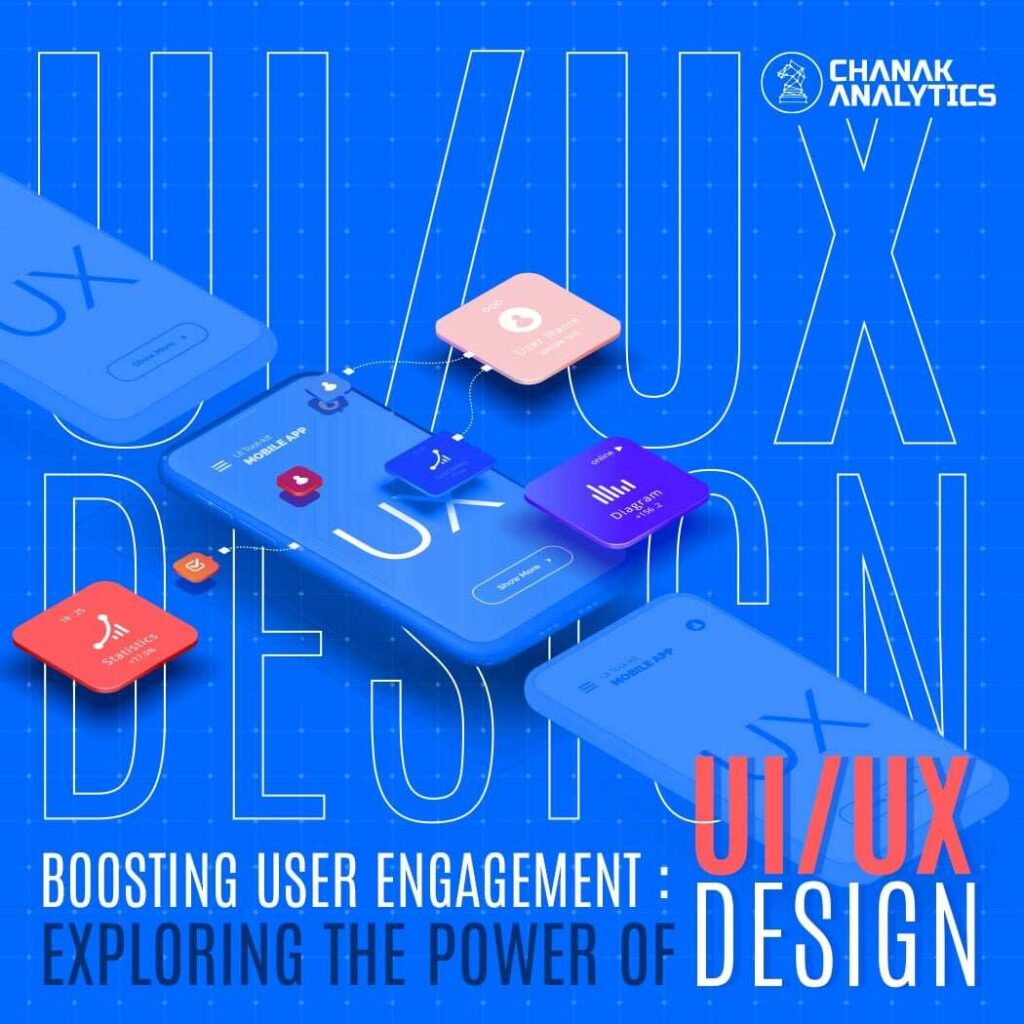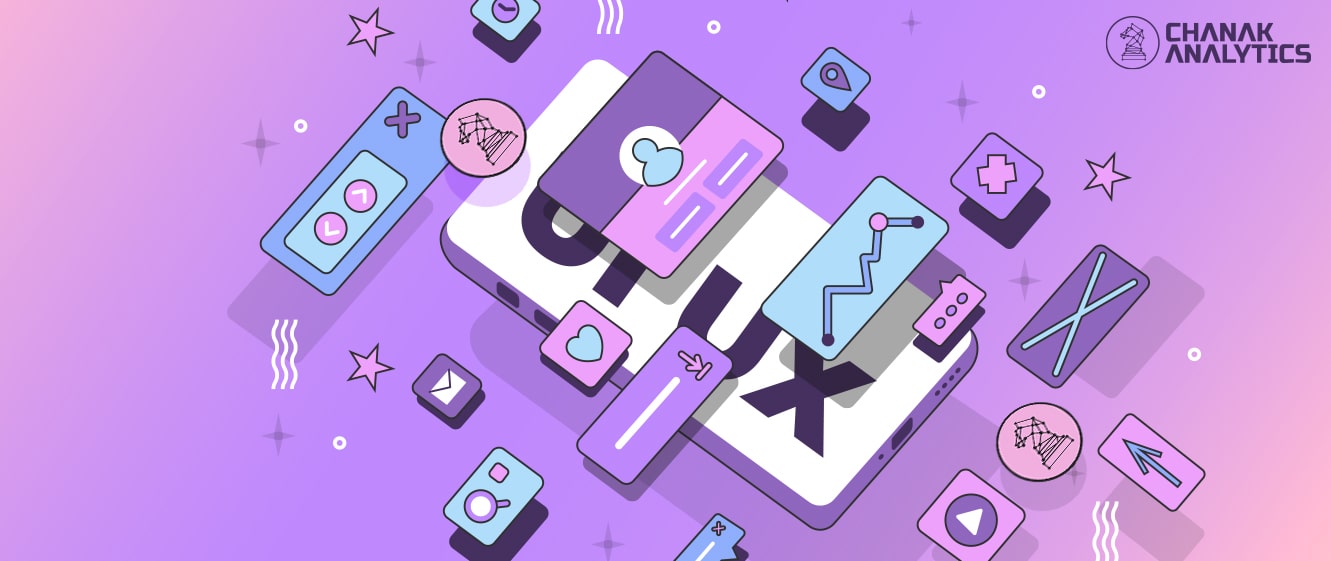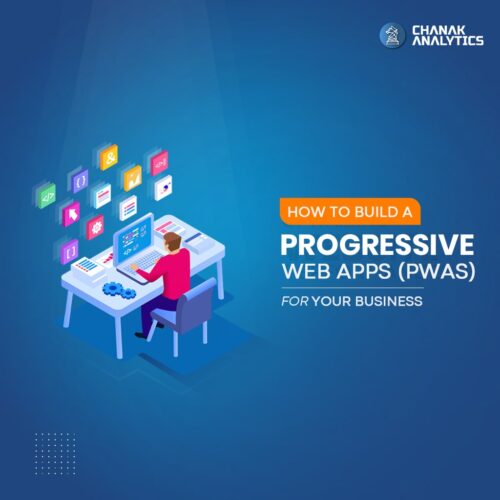Boosting User Engagement: Exploring the Power of UI/UX Design


In the realm of UI/UX design, the concept of user engagement plays a pivotal role. UX design encompasses the creation and optimization of digital interfaces to enhance user satisfaction and overall usability.
With a focus on intuitive interaction and seamless navigation, UI/UX designers strive to captivate users and keep them engaged throughout their digital journey across all devices. Specifically, mobile phones and other devices It goes beyond mere words to say that people spend more time on their phones than anywhere else.
To achieve optimal user engagement on all devices, various strategies can be employed. UI/UX design is one such technique employed to optimize the best results. Overall, prioritizing UI-UX design is essential for making a lasting impression on users.
Why is User Experience Such an Essential Part?
User engagement is not just about attracting users but also about keeping them interested, satisfied, and loyal. It’s not just about how fast your website interface works but also how effective it is at lowering the bounce rate. The design and interface have an audience’s response to them.
• Understand Your Audience with Their Response
Conduct user research to gain insights into your target audience’s needs, preferences, and pain points. It would create user personas to represent different user groups and tailor your design to meet their specific requirements.
- Designs that gather better responses.
- Improvements and edits that boost traffic.
- Easier Navigation of the UX Design on the Web.
- A faster-loading website entails a better user experience.
Elements of UI-UX Design User Engagement

User Interface (UI) and User Experience (UX) work together to create a better and more user-friendly digital experience. There are some fundamental elements for UX-UI design and user engagement. It includes:
- Layout: The arrangement of elements on a page or screen—text, images, buttons, and other interactive components.
- CTAs: A call to action, or CTA, is an active element used in the interactiveness of all platforms, including Mobile First Usage and other platforms.
- Icons and Images: Visual elements like icons, images, and illustrations convey information or guide users.
- Typography: font sizes and font styles for the uniqueness of a brand’s personality.
- Colour Scheme: Selection of colours used throughout the design and interface.
- Buttons and Engaging Elements: Designs for buttons, forms, checkboxes, and sliders.
- Page Navigation: Design of menus, navigation bars, and interlinking of the page.
- Regularity and Consistency: consistent visual language and design system all the way through.
- Responsive and Interactive Design: Same heading design or other attributes on all kinds of devices, including desktops, mobile phones, and tablets.
The Impact of UI-UX Design on User Engagement:
UI-UX design ultimately helps the owner create a vivid and user-friendly experience. This, as a result, has uncountable positive implications for the website. Namely,
• Better User Experience:
At the end of the day, this is the main focus of any abstract or web design. It is particularly designed for the betterment of the website’s appearance. Enhanced UI-UX design will gather more visitors, and that is a positive signal for the website’s growth parameters too.
• User Experience with Better Navigation:
The design is a straightforward and intuitive navigation system that allows users to easily find what they’re looking for. This implements logical menu structures and provides resources for complex websites or applications.
• Responsive Design for All Platforms and Devices:
Ensure your design is responsive and works seamlessly across various devices and screen sizes. Certainly, something that doesn’t require an extra load of mobile website development UI/UX design is used for all kinds of devices.
• Minifies and Simplifies Tasks:
When a user is on your page, they don’t want to click on a million buttons to finally reach the desired destination. With the UI-UX design, the steps are simplified.
It minimises the number of steps and makes the most popular buttons displayed on the heading design itself. On the contrary, it is better to use progressive viewing to eventually reveal more information as users spend time on the interface.
• Visual Hierarchy of Your Website:
The UX patterns and UX design strategy follow a visual hierarchy. Using visual cues such as colour, typography, and spacing to guide users’ attention to important elements and actions This is to prioritise content based on its importance and relevance.
• Responsiveness of the Website:
The total time taken for a website to respond is essentially a part of your user’s experience. Longer tasks do have an extended time called the total blocking time. Provide immediate feedback on user actions to confirm that their input has been recognized. Use animations and transitions to create a more responsive and engaging experience for your users.
• Loading Speed of a Website:
This is one of the most essential needs for a website’s user experience. If you’re running a website that runs super slow, then it is undoubtedly very inefficient. The loading speed is something you can improve with your UI-UX designs.
A faster-loading website reduces the bounce rate of any website. which, at last, helps in improving the user experience of the website as a whole. The power of a faster website always has a positive impact on the website interface.
How to Improve User Engagement Through UI-UX Design?

A website that is designed and enhanced with UI-UX designs always has an advantage over the user’s expectations. To be precise, there are uncountable measures for improving the UI-UX design.
• Personalisation with UX Design Strategy
Customization and personalization of any website are essentially a part of indicating performance. These implementations always have a positive impact on the website’s Page Speed Score too. To Implement personalized content and recommendations based on user behaviour and preferences.
• Functions and Accessibility
The parameters of accessibility are not limited to just abled and intellectual users. A website owner should make sure the design is accessible to users with disabilities by following accessibility guidelines. Accessibility not only extends the number of potential users but also enhances the user experience for everyone.
• Using Organic User’s Response as a Feedback
There is no better way to use user responses than by testing them on real audiences and organic visitors to your website. Precisely working on functions that depend on the website’s response and performance too.
Conduct surveys and other methods of testing to compare different design approaches and determine which one resonates best with your audience. This is something that would ultimately help your website have a proper and enhanced visitor response.
• Social Handles and Social Integration
The UX design strategy helps in making an informed decision about the website. Firstly, any business has to have social media platform promotion, and that is something that would impact your UI-UX designs for user engagement too.
Top 5 Tools Used for UI-UX Design for Boosting User Engagement:
1. Sketch:
Sketch is a macOS-exclusive design tool favoured by many UI/UX designers. It supports plugins, making it highly extensible.
2. Adobe XD:
Adobe XD is a comprehensive design and prototyping tool that allows designers to create interactive prototypes, wireframes, and user interfaces. It’s known for its seamless integration with other Adobe Creative Cloud apps.
3. Figma:
Figma is a web-based collaborative design tool that enables real-time collaboration between designers and stakeholders.
4. InVision:
InVision is a prototyping and collaboration platform that allows designers to create interactive prototypes and gather feedback from stakeholders. It integrates well with other design tools like Sketch and Adobe XD.
5. Adobe Creative Cloud (Photoshop and Illustrator):
WWhile Adobe XD is designed specifically for UI/UX design, many designers still use Adobe Photoshop and Illustrator for creating graphics and assets that are part of the design.
Does UI-UX Design Have a Future with User Engagement?
The future of UI-UX Website design is quite bright, and that is something that will always be constant. It is a very useful and wise way of integrating the user engagement process. If you’re a website user, then you have to have a layout and a website design that are pleasing to the audience.
Something that you, as an owner, would believe in and appreciate. Such a well-decorated and enhanced design would always have proper significance with the UI-UX design for better user engagement.
Conclusion
Incorporating these UI-UX design principles and strategies can significantly enhance user engagement, leading to more satisfied users, increased retention, and ultimately the success of your digital product or service. Remember that the user experience is an ongoing process that requires continuous improvement and adaptation to evolving user needs and expectations.
UI and UX designs have a properly enhanced and established future. Once you use it for the website, there is no going back. A faster and better website for all your users! An impactful UI-UX design.
Join the community
Join our 400,000+ person community and contribute to a more private and decentralized internet. Start for free.


